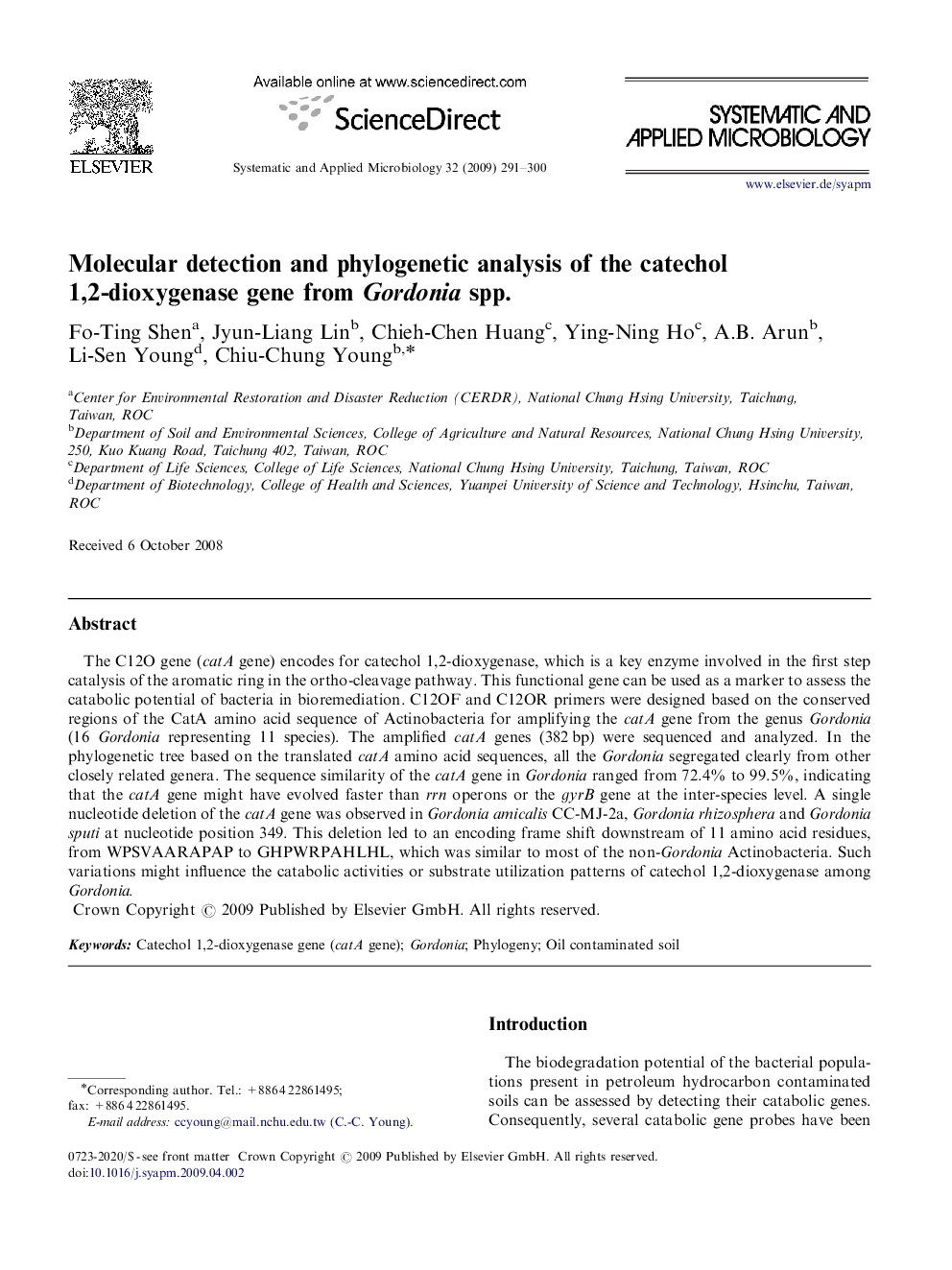| Article ID | Journal | Published Year | Pages | File Type |
|---|---|---|---|---|
| 2063301 | Systematic and Applied Microbiology | 2009 | 10 Pages |
The C12O gene (catA gene) encodes for catechol 1,2-dioxygenase, which is a key enzyme involved in the first step catalysis of the aromatic ring in the ortho-cleavage pathway. This functional gene can be used as a marker to assess the catabolic potential of bacteria in bioremediation. C12OF and C12OR primers were designed based on the conserved regions of the CatA amino acid sequence of Actinobacteria for amplifying the catA gene from the genus Gordonia (16 Gordonia representing 11 species). The amplified catA genes (382 bp) were sequenced and analyzed. In the phylogenetic tree based on the translated catA amino acid sequences, all the Gordonia segregated clearly from other closely related genera. The sequence similarity of the catA gene in Gordonia ranged from 72.4% to 99.5%, indicating that the catA gene might have evolved faster than rrn operons or the gyrB gene at the inter-species level. A single nucleotide deletion of the catA gene was observed in Gordonia amicalis CC-MJ-2a, Gordonia rhizosphera and Gordonia sputi at nucleotide position 349. This deletion led to an encoding frame shift downstream of 11 amino acid residues, from WPSVAARAPAP to GHPWRPAHLHL, which was similar to most of the non-Gordonia Actinobacteria. Such variations might influence the catabolic activities or substrate utilization patterns of catechol 1,2-dioxygenase among Gordonia.
